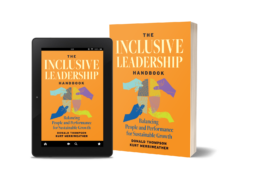Since the start of 2024, more than 140 technology companies have cut staff, and the job cuts don’t seem to be slowing down. Other industries are shedding staff as well, from media companies like Paramount to logistics giant UPS. As we continue to see, workforce reduction is a common method to cut costs and increase efficiency, yet it is also disruptive and emotionally difficult.
While the impact is obvious for those losing their jobs, layoffs can also take a toll on those remaining at the company. Uncertainty and mistrust of management can damage workplace relationships and sap employee morale. Then too, layoffs often mean increased workloads or new demands that heighten performance pressures and risk burnout. And finally, a mismanaged or indelicately handled restructuring may cause long-term or permanent damage to a company’s most important asset – its brand reputation.
When senior leaders have to cut staff, they should be thinking about the long-term effects, not just the short-term gains. Inclusive principles, fair-minded actions, and authentic communication will help organizations maintain their reputations, even as employees are let go. By approaching layoffs with a diversity, equity, and inclusion (DEI) lens, organizations can protect their financial objectives while also respecting the needs of the affected individuals.

Consider these seven best practices to safeguard your inclusive workplace culture, even when you have to lay people off:
- Maintain workforce diversity. Some companies follow the “last-hired-first-fired” principle, cutting newer employees and retaining those who are longer-tenured. Others focus on cutting from certain departments or certain roles within all departments. Some let contractors go while retaining full-time employees. Still others decide who to cut based on utilization rate metrics. While all of these methods merit consideration, remember to also consider the diversity of the remaining team members. Creating a scenario where individuals from historically marginalized groups appear to have been targeted by the layoff process will damage credibility and call into question its ongoing commitment to diversity. In some cases, the organization may even face discrimination lawsuits.
- Communicate honestly and with empathy. Transparency is best when outlining the company’s financial performance and market pressures it faces. Transparent communication allows people to emotionally prepare for changes even before layoff announcements are made. Although some employees might quit when management begins talking about layoffs, it is a better policy to ensure employees are aware of incentives to stay, like severance pay or retraining opportunities. Inform all employees on the same schedule about leadership’s plans for budget-cutting and downsizing. Distrust and anguish are generated when organizations inform a select group in advance, while leaving others to worry or guess.
- Share the news one-on-one and in-person. Sharing layoff news is difficult, but each employee deserves an in-person conversation with a manager. Provide the information directly, both verbally and in writing, and describe what support the company will provide.
- Offer Employee Assistance Programs. Layoffs are traumatic for everyone. Both former and retained employees need extra emotional support. A company’s mental health partners can help to manage the psychological impact of transitions. Before implementing layoffs, leaders should ensure that appropriate Employee Assistance Programs are in place, along with plans for severance packages, logistics, FAQ responses, and other means of support.
- Encourage networking and other support methods. Even though the company is no longer able to employ them, the organization and its staff can continue to provide goodwill and assistance as former employees pursue their next endeavors.
- Keep DEI councils and ERGs active. Diversity councils and employee resource groups (ERGs) support the organization’s mission, vision and goals, while providing support. Ensure that these groups stay active and functioning, even if there are fewer participants.
- Continue to provide DEI training to employees. Budget-cutting doesn’t have to mean a reduction in DEI training. There are many free resources to facilitate education efforts. Employers can also take advantage of low-cost, high-value training like TDM Library and the MicroVideos developed by The Diversity Movement.
Companies that have created positive cultural change via DEI initiatives realize that integrating empathy into the fabric of the organization includes how it handles layoffs and other crises. If downsizing is necessary, a culture-centric leader is going to put diversity at the center, communicating authentically and ensuring that the emotional toll isn’t magnified by doubts about its fairness. A culture-centric organization should conclude its relationship with employees with the same level of integrity and professionalism that guide all its employee interactions.
Inclusive leadership skills can help your executive team navigate the ups and downs of a volatile and ever-changing business environment. Join the ranks of forward-thinking organizations that are harnessing the power of diverse teams and culture-centric workplaces. Contact us today to learn how TDM LeaderView can transform your team and allow your organization to thrive.
Amber Keister is a Content Strategist at The Diversity Movement. She has spent more than 20 years as a journalist for publications throughout the South. Connect with her on Linkedin.




